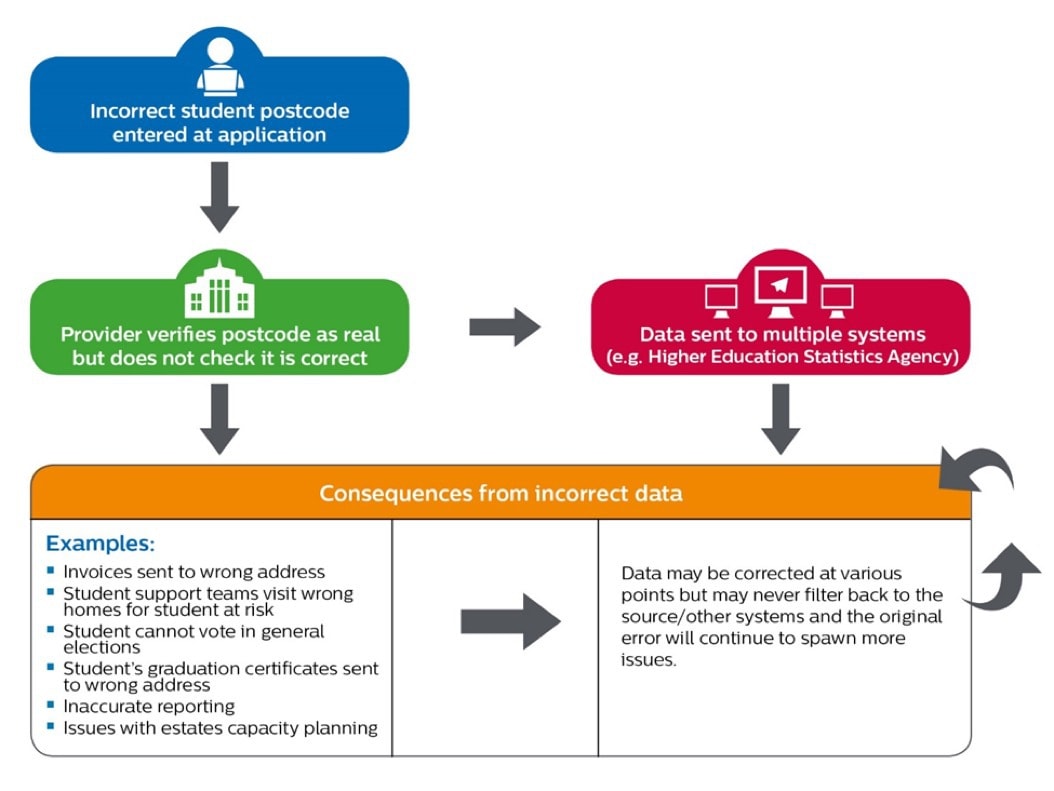Data is like a benign hydra. It lets us allocate our resources more efficiently, interrogate our performance, plan and develop our organisations more effectively, and be more responsive to students’ needs.
Today’s Data Matters conference, organised with QAA’s M5 Group partners Jisc and HESA, focuses on using data to improve the student experience.
Data matters. Not just to data geeks, but to all of us working in higher education. Seats at today’s conference are just as likely to be occupied by a university quality officer as a data specialist.
From a quality perspective, data plays a key part in quality frameworks around the UK:
- the Welsh Quality Assessment Framework published last year
- the Office for Students’ regulatory framework for England and explicitly in its data strategy published last November
- the current Enhancement Theme for Scotland – Evidence for Enhancement: improving the student experience
- informing the assessments for the Teaching Excellence Framework.
Data is an asset
Data is one of the most valuable assets an organisation holds. We need to protect it and treat it with the same care we treat other assets. We keep our money in a bank, so why don’t we keep data in secure databases with clear definitions for terms and validation criteria?
Treating data as an asset is the first step to getting serious about data capability: improving people’s ability to understand, use and manipulate data, and giving them the right tools to do this. Having high-tech capability isn’t necessary – you don’t need a sonic screwdriver to build your database. But the data must be fit for purpose. If it isn’t, the conclusions drawn from it may not be true, and any analysis unreliable.
Don’t confuse fit for purpose with perfect. We’re aiming for data that is well managed and well defined (consistent). I’ve been in meetings where people have wasted hours trying to match the apples of one department’s data to the oranges of another’s, when we could have been getting into the good stuff about what the data is actually telling us.
Link to higher education quality
Data is now integral to every aspect of HE operation, from key performance indicators to building security swipes. And the rewards to be gained from even simple data capability improvements not only help providers achieve objectives, but also drive development.
The HEDIIP data capability toolkit evaluates where your organisation sits within a data capability maturity model and where it could be. The model has five levels: chaotic, reactive, stable, proactive and predictive. Most organisations are in the low reactive level but have the potential to be in the high stable to low proactive levels. HEDIIP found a lack of good data capability in many departments (both professional services and academic). However, there are pockets of expertise, often located in specialist planning and data teams, which could readily help upskill other members of staff, including senior managers.
QAA’s executive team and board have, thankfully, embraced data capability as a vital priority and recognised it in our corporate strategy. For us, identifying a discrete problem with a time limit to fix it has worked better than developing and monitoring data improvement plans. This approach lets us see solutions to real problems and, with that, a sense of momentum and progress that plans alone don’t convey.
In 2017, with our M5 Group partners Jisc and HESA, we created a tool for universities to perform an in-house quality health check. The Provider Healthcheck, which sits on the Heidi Plus platform, uses key data sources to provide KPIs for managers to demonstrate that academic standards are being maintained. It also identifies potential issues for further investigation.
Data capability is important for lots of reasons, not least regulatory requirements like GDPR, which carries potentially massive fines from the Information Commissioner’s Office for non-compliance. However, striving to improve data capability shouldn’t be driven by regulatory requirements. There are real benefits to be gained from getting it right.
The impacts of poor data capability can be hard to identify and quantify especially when data errors occur at the point of entry. Look at what happens when an incorrect student postcode is entered into a provider’s system:

Taken in isolation, the consequences of entering incorrect data wouldn’t have a big impact or high associated costs, making it hard to justify spending time improving processes or investing in a new system. However, combine these costs with the data cleansing required and the total cost of failure could be vast. More than enough to justify buying a new system that checks postcodes are both real and correct and train staff in how to use it.
Building data capability?
Improving data capability offers significant benefits and can have a real impact on the student experience. However, be prepared to put in some serious time and effort: the HEDIIP data capability programme estimates that it takes at least 18 to 24 months to move up a data capability maturity model level once improvement work has begun.
Treating data as an asset and improving your data capability is a commitment that needs to be driven from the top down, and it has to be consistent and ongoing. The most successful organisations in this area are those that have done exactly this. They have dramatically improved their data capability and been able to use the insights gained from their fit for purpose data to improve the experience they offer their students, improve their teaching and research and climb up the rankings as a result.













